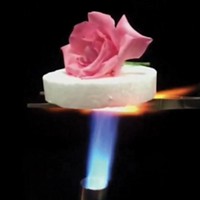Advertisement
Grab your lab coat. Let's get started
Welcome!
Welcome!
Create an account below to get 6 C&EN articles per month, receive newsletters and more - all free.
It seems this is your first time logging in online. Please enter the following information to continue.
As an ACS member you automatically get access to this site. All we need is few more details to create your reading experience.
Not you? Sign in with a different account.
Not you? Sign in with a different account.
ERROR 1
ERROR 1
ERROR 2
ERROR 2
ERROR 2
ERROR 2
ERROR 2
Password and Confirm password must match.
If you have an ACS member number, please enter it here so we can link this account to your membership. (optional)
ERROR 2
ACS values your privacy. By submitting your information, you are gaining access to C&EN and subscribing to our weekly newsletter. We use the information you provide to make your reading experience better, and we will never sell your data to third party members.
Materials
Moldable Metals
Sticky nanoparticles assemble into metal with plastic properties
by Bethany Halford
April 16, 2007
| A version of this story appeared in
Volume 85, Issue 16

Coordinating the assembly of just a few nanoparticles is no easy task, but corralling enough of the unruly particles to form a macroscopic material takes skilled scientific herding techniques.
Now, a group of chemical cowboys led by Northwestern University's Bartosz A. Grzybowski has developed a straightforward method for assembling nanospheres made of gold, silver, platinum, or palladium into moldable metal materials (Science 2007, 316, 261).
The new method employs long-chain dithiol cross-linkers to glue the nanoparticles to one another. The resulting claylike material can then be molded into myriad millimeter-sized structures that are electrically conductive.
Heating to about 50 ??C hardens the metallic clay into porous polycrystalline metal. Furthermore, the researchers can control the porosity, suggesting possible applications in separations science and catalysis.





Join the conversation
Contact the reporter
Submit a Letter to the Editor for publication
Engage with us on Twitter